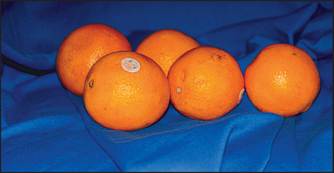Chapter 8 Cosmeceutical Vitamins: Vitamin C
INTRODUCTION
Vitamin C is a naturally occurring antioxidant incorporated into cosmeceuticals for the purpose of preventing and treating sun-damaged skin. Most plants and animals have the capacity to synthesize vitamin C. In humans, however, vitamin C cannot be synthesized because of loss of the ability to produce L-glucono-gamma-lactone oxidase, the enzyme necessary for its production. Vitamin C must instead be obtained from dietary sources such as citrus fruits and leafy green vegetables (Fig. 8.1). Interestingly, oral supplementation with vitamin C produces only a limited increase in skin concentration. This is because even with ingestion of massive doses, the absorption of vitamin C is limited by active transport mechanisms in the gut. Therefore, vitamin C has become a popular topically applied cosmeceutical.
VITAMIN C: EFFECTS ON COLLAGEN AND ELASTIN SYNTHESIS
Vitamin C is essential for collagen biosynthesis. Ascorbate serves as a cofactor for prolyl and lysyl hydroxylase, the enzymes responsible for stabilizing and cross-linking collagen. Ascorbate can also stimulate collagen synthesis directly by activating its transcription and stabilizing procollagen mRNA. Scurvy serves as prototype for the physiologic changes that occur when vitamin C is lacking and collagen biosynthesis is impaired.









